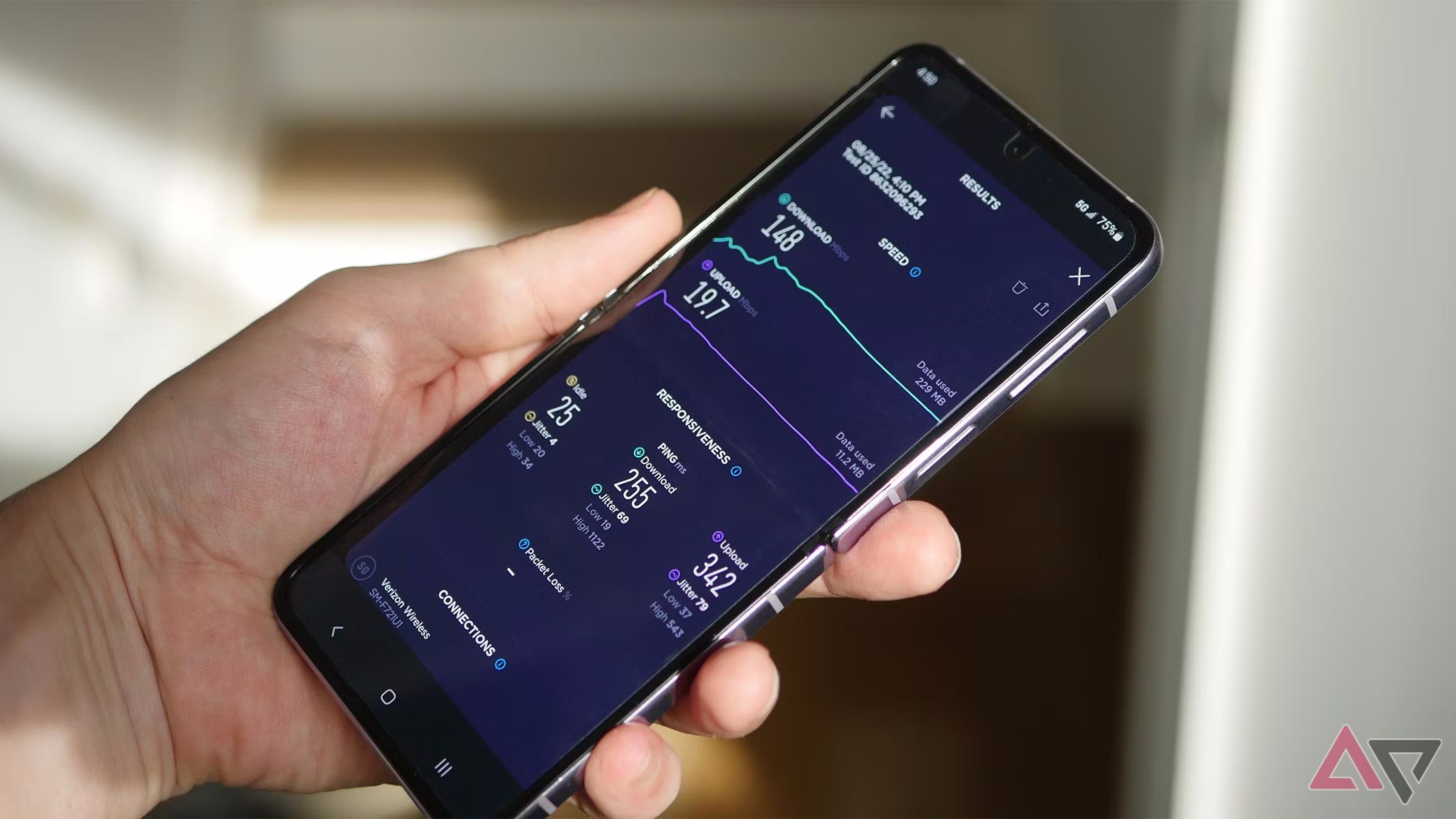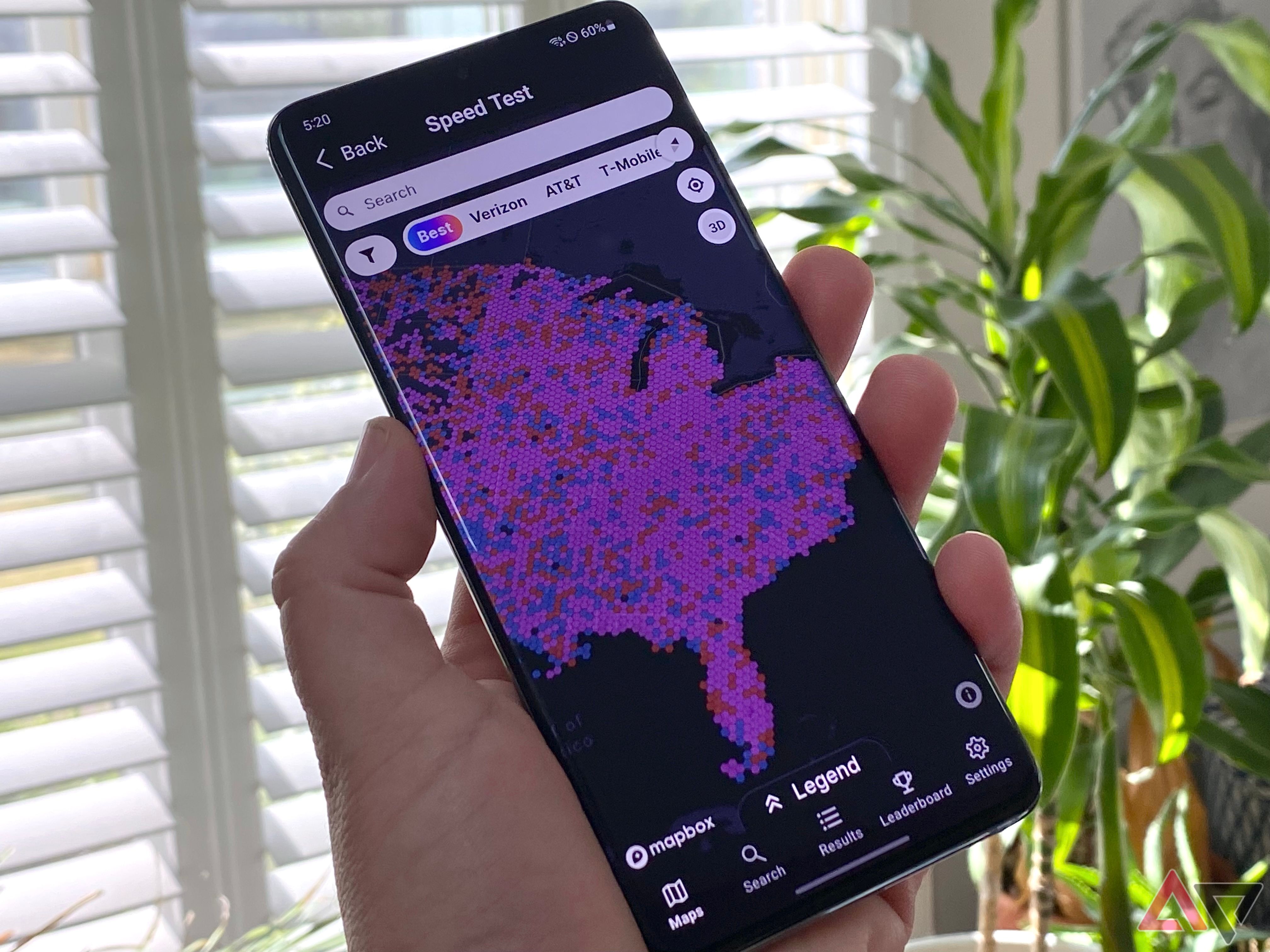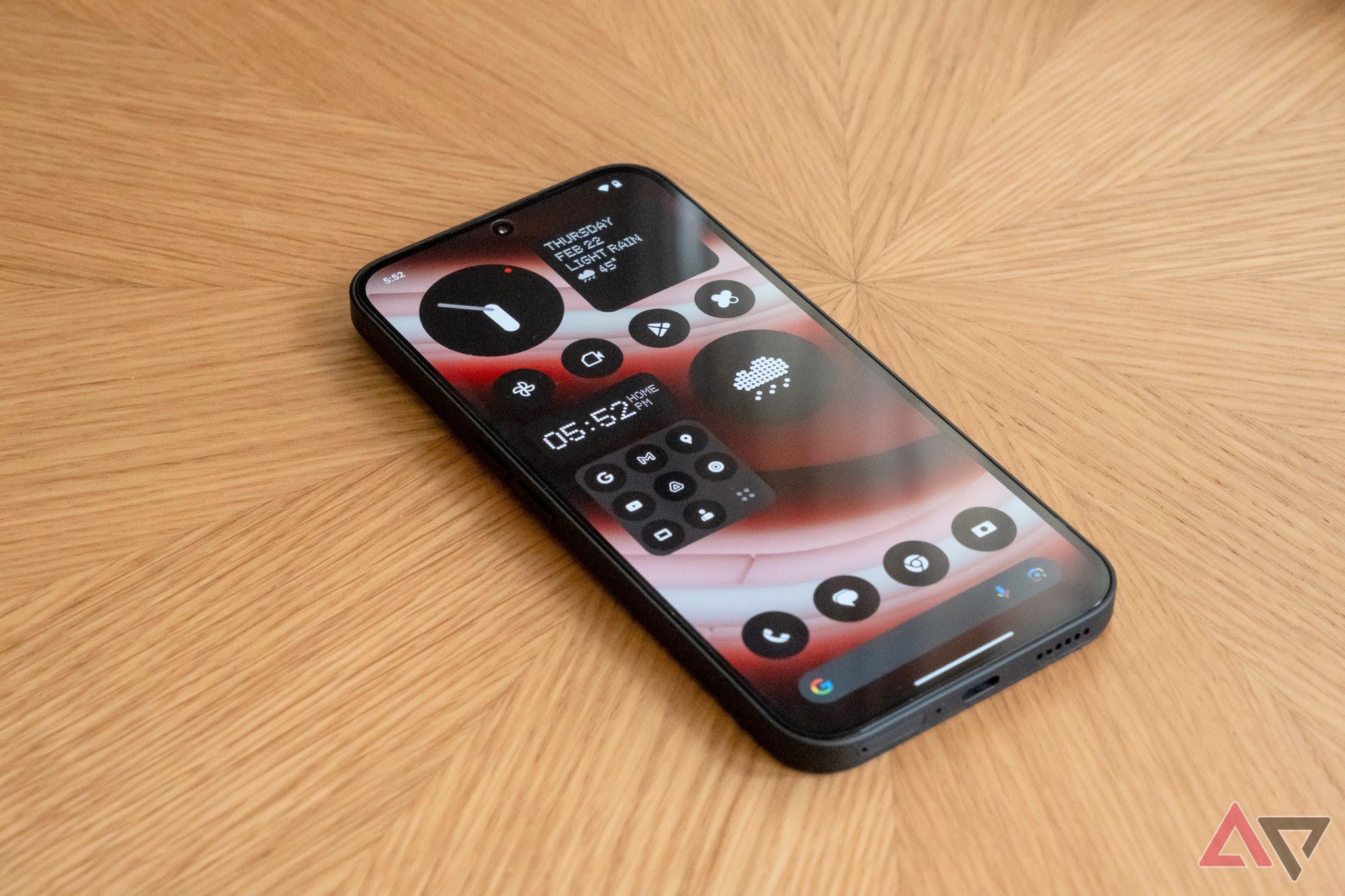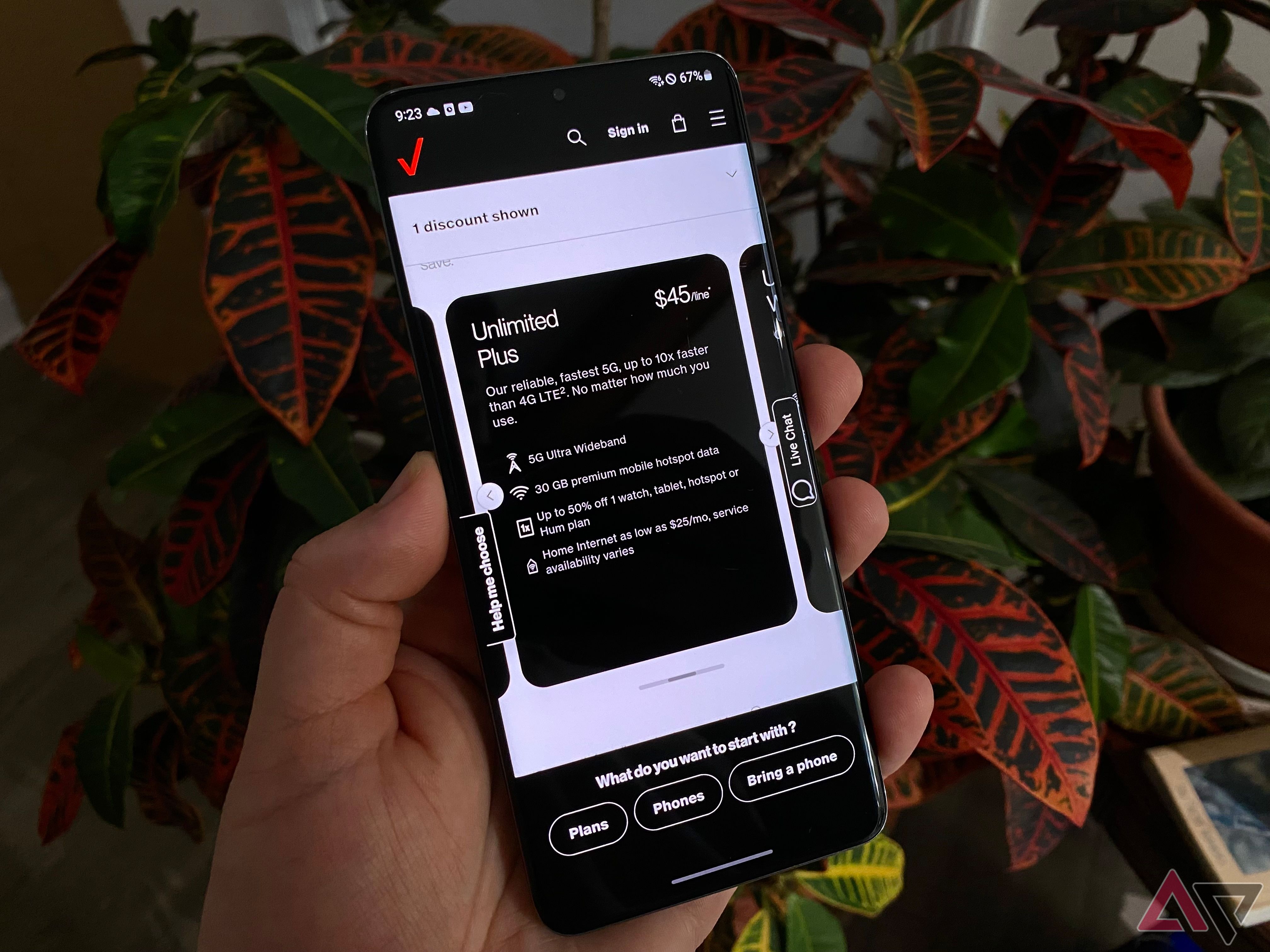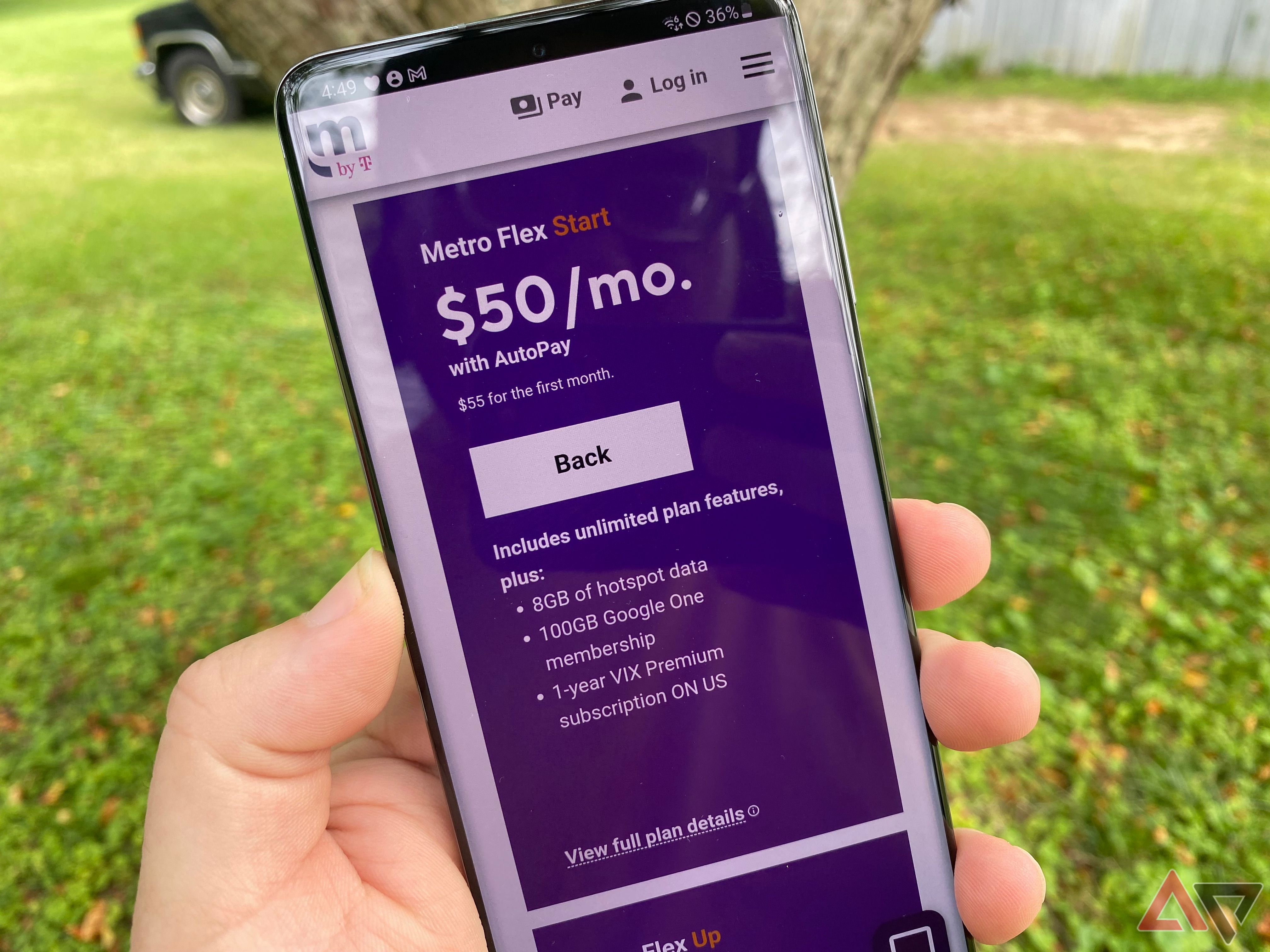-
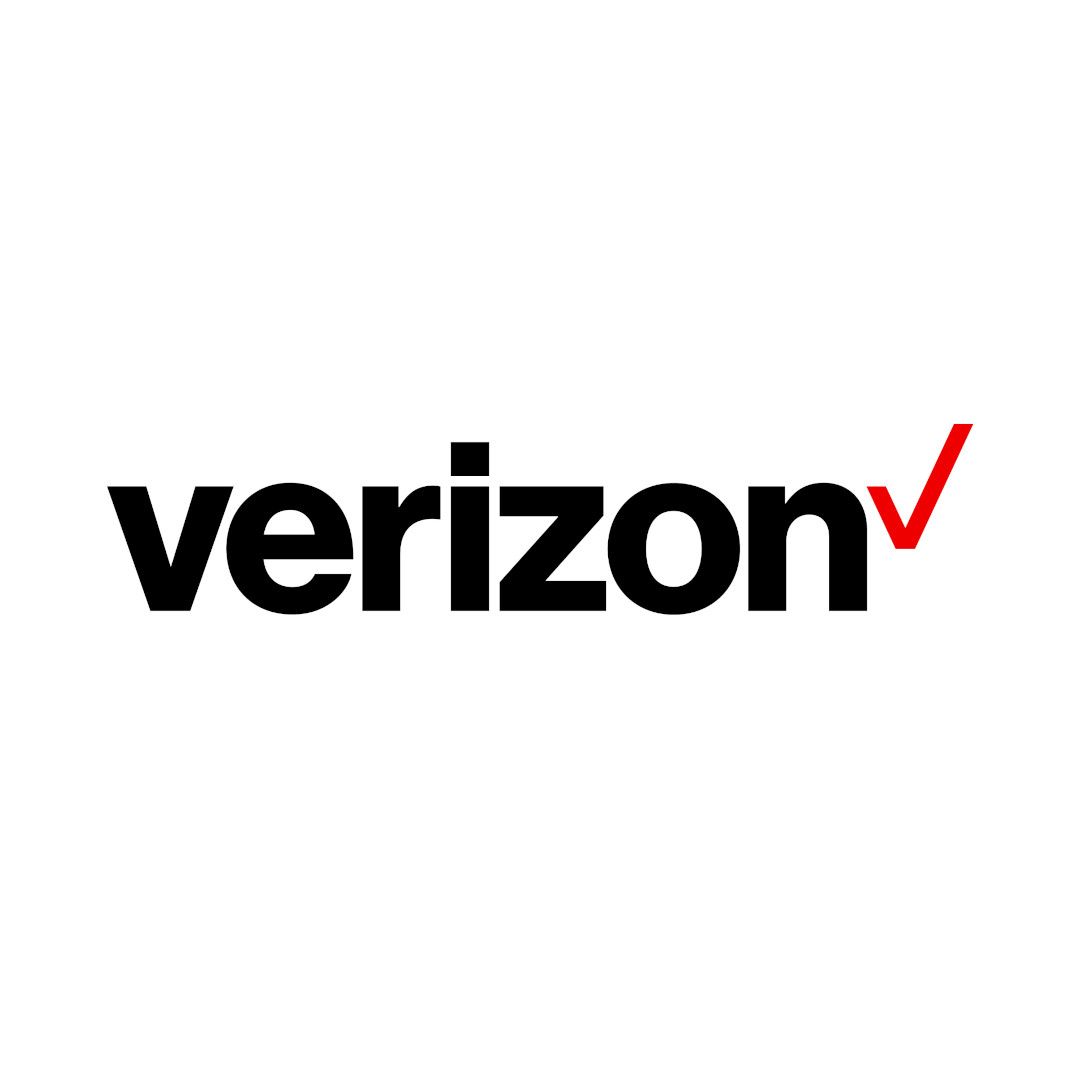
Choose your add-ons
Verizon
Verizon’s plans are the most sensible they’ve ever been with just three simple postpaid plans with optional add-ons for those that want them. With multi-line savings and discounted prices on add-ons, Verizon is still a solid option for those with multiple lines.
Pros- Excellent nationwide coverage
- Simple plans with discounted add-ons
- Solid multi-line savings
Cons- Expensive for a single line
- Taxes and fees are extra
-
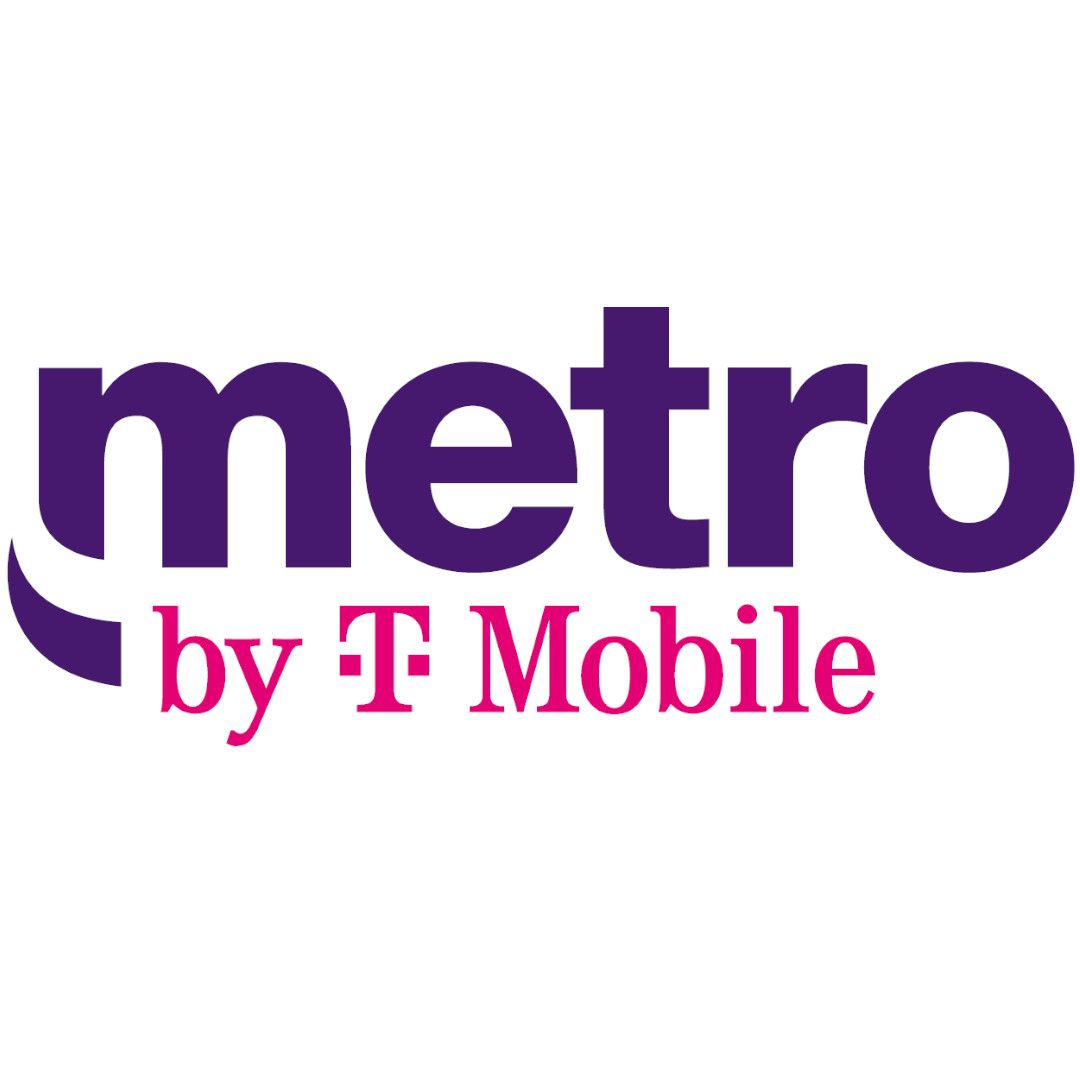
Cheap unlimited 5G data
Metro by T-Mobile
Metro by T-Mobile is a prepaid carrier owned and operated by T-Mobile. The carrier offers multiple unlimited plans as well as an affordable 10GB plan with multi-line discounts for those bringing the whole family. With a Metro plan, you can even get 5G Home Internet at a discount with unlimited data and cheap equipment.
Pros- Plenty of data on the T-Mobile 5G network
- Taxes and fees are included
- Affordable single and multi-line options
Cons- Streaming is limited to 480p on all plans
- Can be expensive for a single line
Metro by T-Mobile is a prepaid brand operated by T-Mobile, and while its plans offer a ton of data on T-Mobile’s 5G network, Metro doesn’t win a total victory over Verizon. Verizon’s updated myPlan options make it easy to save on your bill by cutting out services you don’t need or use. If you want unlimited data and aren’t too concerned with add-ons, you may even be able to save money with a Verizon postpaid plan.
Mobile carrier features
Verizon is one of the Big Three carriers that builds and maintains their own LTE and 5G networks. As such, Verizon’s plans mostly offer unlimited data with pricier plans adding premium data, hotspot data, and international add-ons. Verizon also offers discounts on its Home Internet services when you sign up for a postpaid plan. This works for both Verizon 5G Home and Fios Home Internet.
Verizon also includes discounts on new devices or BYOD credits for bringing your own. On the top Unlimited Ultimate plan, for example, you could get a $540 promo credit for bringing your new phone. Similarly, the more expensive plans also enjoy greater savings on new phones.
Verizon’s biggest feature is its add-on structure. Verizon’s postpaid add-ons are more than basic plan features and include options like a Disney Bundle with Disney+, Hulu, and ESPN+ for $10 per month. In fact, all of these add-ons cost $10, so if you get something like YouTube Premium or Apple One, you can save compared to directly subscribing.
Metro is a lot simpler in terms of features, choosing instead to mostly focus on delivering data, which isn’t a bad thing. Of Metro’s six current plans, four of them come with unlimited data. Most plans get multi-line discounts, so you can save by bringing the family along. Metro’s top three plans also come with one year of VIX, a Spanish-language streaming service, and 100GB of Google One storage.
Coverage and reception
Verizon’s network is known for its strong coverage, harking back to its excellent 3G and 4G LTE coverage, though 5G coverage still lags behind the likes of T-Mobile. Still, for most people, LTE offers plenty of speed for the time being, and in the cities where Verizon has managed to deploy 5G, performance is generally strong.
Regardless, if you’re changing networks, you should take a look at the Verizon coverage map to make sure you’ve got a strong signal wherever you live and work. If you want to try the network for yourself, you can try the network for 30 days for free.
Metro by T-Mobile uses T-Mobile’s network for all of its coverage, meaning it gets the best 5G coverage and performance overall in the country. T-Mobile has rapidly expanded its network thanks to a sizable chunk of 2.5GHz spectrum from its purchase of Sprint; not only does this spectrum have better propagation than Verizon’s mid-band spectrum at a higher 3.7GHz, but it was available much earlier, allowing T-Mobile to establish a strong coverage lead for 5G.
With continued expansion and improvements in 5G carrier aggregation, T-Mobile has maintained its 5G lead, even as AT&T, Verizon, and DISH scramble to catch up. Still, you should check Metro’s coverage map to be sure you’re covered. While Metro itself doesn’t offer a free trial, parent company T-Mobile does if you want first-hand experience with the network.
Phone compatibility
Being one of the biggest carriers in North America, most phones made for this market will work fine on Verizon. That said, if you bring an unlocked device you bought from another carrier, like AT&T, you may experience some compatibility issues. Most of the best Android phones should work with Verizon if they were purchased unlocked, however.
For 5G support on Verizon, your phone should support bands n2, n5, n66, and n77 at minimum, and bands n260 and n261 to get the best speeds in some city centers. You can check your phone’s compatibility using Verizon’s BYOD tool to see if it’ll work.
If you’re ready for a new phone, though, Verizon sells a wide range of devices with enticing 36-month payment plans on pricier models. Depending on your plan, you can get mostly bill credits to offset the cost, but that also means you’re stuck with Verizon, and the plan you chose, for years to come. If you decide you want to switch before you’ve paid off the phone, you’ll need to pay the difference, minus any upcoming bill credits.
The T-Mobile network has even better compatibility than Verizon and will even work with some international models. In fact, the T-Mobile network was used in our review of the Nothing Phone 2a, which isn’t made for the US market. For 5G coverage, your phone should support bands n71, n41, and n25.
T-Mobile also uses carrier aggregation to take advantage of multiple bands at once to improve speeds. You can still check your IMEI at Metro’s website to be sure your phone is compatible.
Plans
Verizon’s main plans are postpaid and require a credit check, but it also has a handful of prepaid plans under its main brand. Metro, on the other hand, is all prepaid and doesn’t need any credit checks. It’s also worth keeping in mind that Verizon’s best prices require auto-pay to be enabled on your account. Similarly, Metro by T-Mobile charges $5 more if you don’t use auto-pay.
Verizon’s plans
Most people think of Verizon’s postpaid plans first, but the carrier has a few prepaid options that are worth mentioning. Verizon Prepaid plans require auto-pay for their lowest prices, with loyalty discounts at three and nine months of service. The cheapest prepaid plan is just Talk & Text for $30 per month. Moving up, a 15GB plan comes in at $35 per month with auto-pay, with usage in Mexico and Canada.
Moving on with prepaid, the Unlimited plan comes in at $50 per month and gets 5GB of mobile hotspot data. Unlimited Plus adds Ultra Wideband 5G speeds and bumps the hotspot data up to 25GB. It also provides calling to one country for free with Global Choice, which gets up to 180 minutes per month.
For the most part, if you’re looking for a prepaid service on the Verizon network, Visible+, from Verizon’s prepaid carrier Visible, offers a better value.
When it comes to postpaid, Verizon starts off small with Unlimited Welcome at $65 for the first line. With four lines, that comes down to just $30 per line plus taxes and fees. This plan doesn’t get any premium data or access to 5G Ultra Wideband, but for most people, it should still be plenty fast. If you bring your own phone, you can get up to $180 in promo credits as well.
Unlimited Plus makes all data usage premium data and comes with faster 5G speeds with Ultra Wideband 5G. You also get 30GB of mobile hotspot data, up to $360 in credits if you bring your own phone, and up to half off a connected device data plan. Video streaming quality is also upgraded to 720p. Unlimited Plus costs $80 for the first line, but that comes down to $45 per line if you bring four lines.
Unlimited Ultimate builds on this plan with an upgrade to 60GB of hotspot data, roaming in 210+ countries, and up to $540 in promo credits when you bring your own phone. This plan also gets Verizon’s best new device deals and can stream video at up to 1080p resolutions. This plan comes in at $90 for the first line and drops down to $55 per line with four lines.
|
Unlimited Welcome |
Unlimited Plus |
Unlimited Ultimate |
|
|---|---|---|---|
|
Price (per month) |
1 line: $65 |
1 line: $80 |
1 line: $90 |
|
4 lines: $120 |
4 lines: $180 |
4 lines: $220 |
|
|
5G |
Nationwide 5G |
Ultra Wideband 5G |
Ultra Wideband 5G |
|
Talk and text |
Unlimited |
Unlimited |
Unlimited |
|
Data |
Unlimited |
Unlimited Premium |
Unlimited Premium |
|
Hotspot |
None |
30GB |
60GB |
|
Taxes and fees |
Extra |
Extra |
Extra |
If you need home internet service as well, you could save by bundling it with your Verizon plan. You can get home internet for as low as $35 per month with 5G Home Internet or Fios Home Internet. As Fios uses fiber, you should choose that over 5G, if available.
Metro by T-Mobile’s plans
Metro puts its three main Metro Flex unlimited plans front and center when you visit its website. These plans each come with unlimited data (35GB prioritized) and support multi-line discounts. The Flex plans also come with a 100GB Google One membership and a one-year subscription to VIX, a Spanish-language streaming service.
Metro Flex Start comes in at $50 per month for a single line or $155 per month with four lines. It comes with 8GB of mobile hotspot data as well. Metro Flex Up takes the price up to $60 per month, or $165 with four lines. Metro Flex Up gets 25GB of hotspot data and adds texting to 210+ countries and destinations.
Metro Flex Plus is a bit more interesting with mostly the same features as Metro Flex UP, but with Amazon Prime included. That means you get all of Prime’s benefits, including free shipping, Amazon Prime Video, and Music streaming. This plan starts at $70 per month, with four lines coming in at $175. In fact, no matter how many lines you bring, you’re paying just $10 more for this plan, which, if you already pay for Amazon Prime, makes it a no-brainer.
On the lower end, there’s a 10GB plan that comes in at $40 per month for a single line, and $135 for four lines. If you’re bringing your number with you, however, you should check out the $25 per month unlimited plan. You have to bring your number and phone for this deal, but the price makes it a great option without needing to count your gigabytes.
Last, and perhaps least, there’s a $30 plan for those who bring their phone, but get a new number. This plan gets just 5GB of data with unlimited talk and text. Perhaps two years ago, this would have been a solid deal, but you’re better off going to another carrier, like MobileX, if you’re looking for a cheap 5GB plan.
|
Flex Start |
Flex Up |
Flex Plus |
10GB |
BYOD Unlimited |
BYOD 5GB |
|
|
Price (1 line) |
$50 |
$60 |
$70 |
$40 |
$25 |
$30 |
|
Price (4 lines) |
$155 |
$165 |
$175 |
$130 |
N/A |
$120 |
|
Taxes and fees |
Included |
Included |
Included |
Included |
Included |
Included |
|
Requirements |
N/A |
N/A |
N/A |
N/A |
Bring your own device Bring your number |
Bring your own device |
|
Data |
Unlimited |
Unlimited |
Unlimited |
10GB |
Unlimited |
5GB |
|
Hotspot data |
8GB |
25GB |
25GB |
Shared |
None |
Shared |
|
Extra |
Vix (1 year) |
Vix (1 year) |
Vix (1 year) Amazon Prime |
N/A |
Vix (1 year) |
N/A |
Which should you buy?
Overall, Verizon mounts a surprisingly strong defense when it comes to unlimited data plans, with its Unlimited Welcome plan coming out on top for accounts with four lines. Still, if you’ve only got a single line or less than four, Metro by T-Mobile comes out on top in terms of value. If you’ve only got a single line and already have a phone, Metro’s $25 unlimited plan stands out as a great value, especially when you remember taxes and fees are included.
If you have good T-Mobile coverage in your area, there’s a good chance you could save on mobile data with Metro by T-Mobile, and depending on your 5G coverage, you may even end up with better network performance.

Metro by T-Mobile
Metro by T-Mobile is one of T-Mobile’s main prepaid brands and it comes with tons of data on the carrier’s network. Metro’s unlimited plans come with full 5G support, so you can get strong 5G speed without spending a fortune on a postpaid plan.
Verizon’s myPlan postpaid plans offer surprisingly good value if you’re bringing a few lines with you. If you’ve got a lot of subscription services, you could even save on them with Verizon’s add-ons. For example, you can still get YouTube Premium for $10 per month with Verizon, while the service has increased to $13.99 if you buy it directly through YouTube. On top of that, you’ll get excellent coverage on the Verizon LTE and 5G networks with unlimited data.

Verizon
Verizon’s postpaid plans compete with multiple lines but fall short of Metro with a single line. Still, Verizon offers competitive prices with cheap add-ons that can make it a good value to the right customer.
Source link

